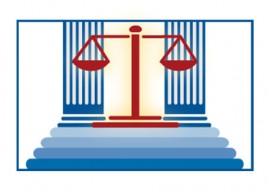Duty to Disclose Error That May Constitute Malpractice
By Lazar Emanuel [Originally published in NYPRR February 2001]
When does a lawyer have a duty to report to a client an error or omission that may lead to a malpractice claim against the lawyer? And when does the lawyer have a duty to withdraw after disclosing the error, even if the client doesn’t want him to?
The State Bar reviewed the answers to these questions in Opinion 734. The Opinion deals specifically with a request involving the Legal Aid Society, but the answers apply to all lawyers.
Whether the error or omission requires disclosure depends on several case-by-case factors:
• The nature of the error or omission
• Whether the error can be corrected in the pending proceeding
• The extent of harm to the client
• Whether the error or omission is sufficiently clear to support a malpractice claim
The Opinion cites one example which required disclosure. A lawyer had failed to file a claim within the statute of limitations period. In that case, “…(the) lawyer had a professional duty to notify the client promptly that the lawyer had committed a serious and irremediable error, and of the possible claim the client (had) against the lawyer for damages…” [N.Y. State 275 (1972).]
Once the lawyer determines that disclosure of error is required, he must inquire further whether he now has an irreconcilable conflict of interest which requires withdrawal under DR 5-101(A). The incipient conflict is created by the lawyer ’s personal interest in avoiding or minimizing his civil liability.
If “the exercise of professional judgment on behalf of the client will be or reasonably may be affected by the lawyer’s own” interest, then the lawyer may continue the representation only if “a disinterested lawyer would believe that the representation of the client will not be adversely affected thereby.”
Here again, the facts of each case will determine whether the error gives rise to an irreconcilable conflict. It may be possible to correct the error, for example. Or the error may not be serious or egregious enough to cause much harm. A lawyer who failed to settle a judgment within the time period prescribed by procedural rules was deemed to have a conflict requiring withdrawal.
But the lawyer may not withdraw willy-nilly. He must first take steps “…to the extent reasonably practical to avoid foreseeable prejudice to the rights of the client.” The specific steps will depend on the circumstances of the particular case. The prescribed steps include giving notice to the client; allowing time for the employment of other counsel; and delivering to the client all the papers and property to which the client is entitled. [DR 2-110(A)(2); see, also, DR 6-102; EC 2-6; EC 2-8 and EC 2-32.] If the matter is in litigation, the lawyer must ask the Court’s permission before withdrawing. DR 2-110(A)(1).
The Opinion concluding by applying all these rules to the Legal Aid Society in the same way as if it were a law firm or individual practitioner.
Lazar Emanuel is the Publisher of NYPRR.
DISCLAIMER: This article provides general coverage of its subject area and is presented to the reader for informational purposes only with the understanding that the laws governing legal ethics and professional responsibility are always changing. The information in this article is not a substitute for legal advice and may not be suitable in a particular situation. Consult your attorney for legal advice. New York Legal Ethics Reporter provides this article with the understanding that neither New York Legal Ethics Reporter LLC, nor Frankfurt Kurnit Klein & Selz, nor Hofstra University, nor their representatives, nor any of the authors are engaged herein in rendering legal advice. New York Legal Ethics Reporter LLC, Frankfurt Kurnit Klein & Selz, Hofstra University, their representatives, and the authors shall not be liable for any damages resulting from any error, inaccuracy, or omission.
Related Posts
« Assessing Impact of Proposed DR 1-107, etc. Prospective Client & Proposed Model Rule 1.18 »













